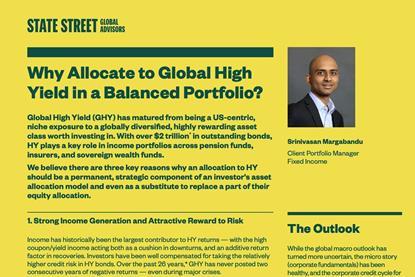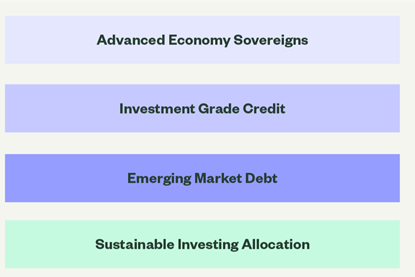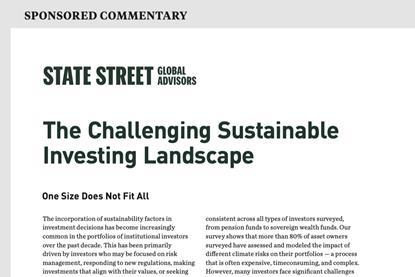Content (18)
-
White papers
Why Allocate to Global High Yield in a Balanced Portfolio?
Global High Yield (GHY) has matured from being a US-centric, niche exposure to a globally diversified, highly rewarding asset class worth investing in. With over $2 trillion* in outstanding bonds, HY plays a key role in income portfolios across pension funds, insurers, and sovereign wealth funds.
-
White papers
3 Global High Yield Myths That Just Don’t Hold Up
A source of return, yield and diversification, GHY merits serious consideration for most fixed income portfolios but doubts remain for some investors. We challenge three common GHY myths and explain why it makes sense for most investors to consider an indexed approach in GHY.
-
White papers
SAFI: A Modern Approach to Fixed Income Investing
How does systematic active fixed income (SAFI) investing actually work? In this article, we go through the SAFI investment process step by step, explain the generation of signals, and discuss the various potential benefits of SAFI for investors.
-
White papers
Case Study: Systematic Active Fixed Income
How can Systematic Active Fixed Income be effectively incorporated into a core fixed income allocation? We give a practical example in our case study.
-
White papers
How to Decarbonize Multi-Strategy Equity Portfolios: Practical Considerations
In the past few years, we have seen a growing number of Asian investors setting decarbonization targets for their equity portfolios. Some investors are interested in achieving carbon intensity reduction versus their market-cap based policy benchmark, while maintaining the desired broad market exposure.
-
White papers
Emerging Market Debt Outlook: All Roads Lead to the US
This year, we are looking to the US to drive the market’s direction. We believe the US economy will continue to soften, which will spur the Fed to cut rates three times. In other words, that soft landing that we were expecting last year will likely materialise this year. When rates are lower, the USD typically weakens. And this creates a goldilocks scenario for Emerging Market Debt.
-
White papers
Forward-Looking Climate Metrics in Corporate Bond Portfolios
Moving beyond backward-looking carbon footprinting, this research explores how implied temperature rise, carbon risk ratings, and climate value-at-risk methodologies can provide valuable forward-looking insights for fixed income investors who prioritise sustainability considerations. Discover practical applications, coverage analysis, and implementation considerations specific to corporate bond portfolios. Read the article if climate integration is part of your investment approach.
-
White papers
Fixed Income 2025: Roadmap
It’s a very dynamic time for fixed income. Get the game plan for 2025’s winners and losers.
-
White papers
Return of the Sovereigns
With central banks poised for rate cuts, and fiscal sustainability sometimes called into question, where should fixed income investors be looking now? We explore the return of sovereigns, IG and HY credit as well as the evolving opportunities in EM. Join us as we breakdown the opportunities, risks and strategies.
-
White papers
Building a Better Benchmark for Leveraged Loan Indexing
It is now possible for investors to invest in leveraged loans via an indexed, or passive approach, but advanced trading and portfolio construction techniques are key for low-cost, credible beta exposure. Read more in our insights.
-
White papers
The Challenging Sustainable Investing Landscape
The incorporation of sustainability factors in investment decisions has become increasingly common in the portfolios of institutional investors over the past decade. This has been primarily driven by investors who may be focused on risk management, responding to new regulations, making investments that align with their values, or seeking to enhance long-term performance.
-
White papers
A Leveraged Loan Index That Matches Investors’ Reality
Growth in the size of the leveraged loan market has boosted trading volumes and transparency in the asset class and helped to make it a viable option for index-focused investors. We discuss leveraged loan index strategies, tracking error and trading costs.
















